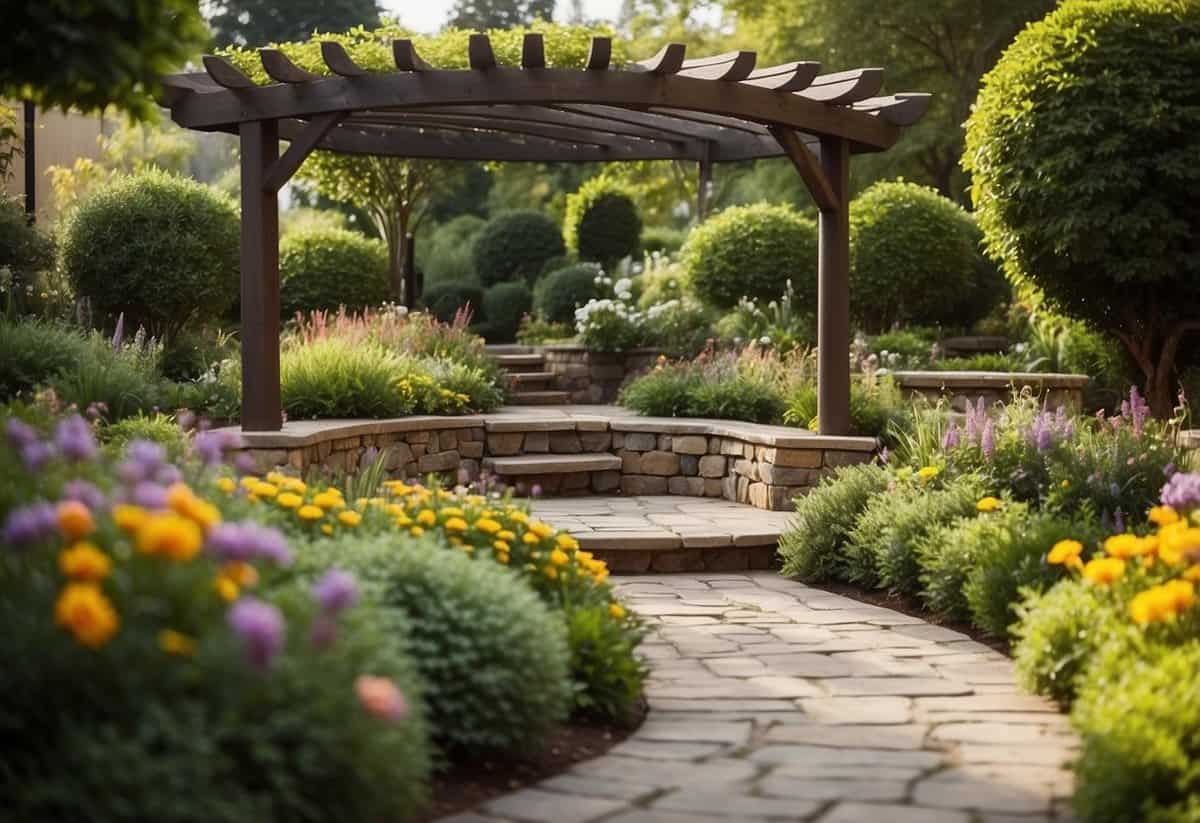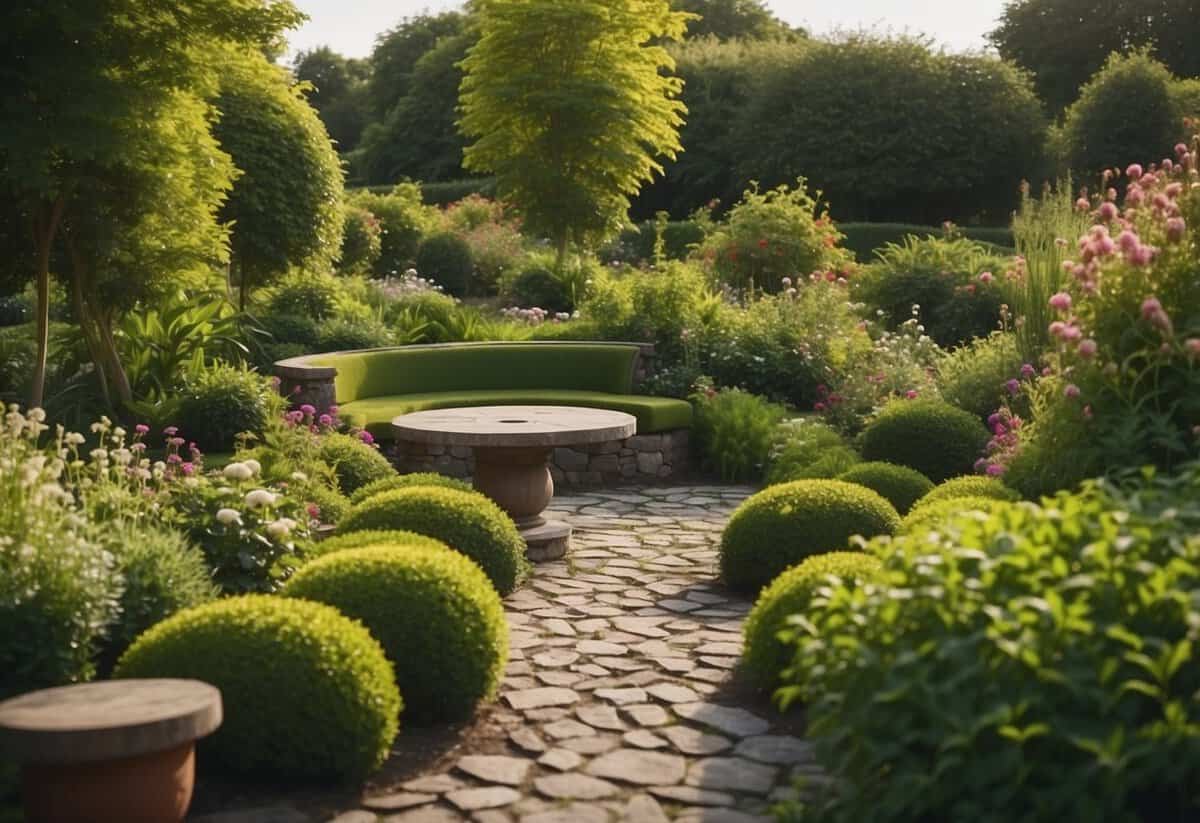Garden Ideas for Medium Garden: Transform Your Space with These Tips
Are you looking to transform your medium-sized garden into a beautiful and functional space? Whether you dream of a lush backyard retreat or a practical kitchen garden, there are countless ideas to explore.

Gardening can enhance the beauty of your home and provide a relaxing hobby. With thoughtful planning, your medium garden can become an inviting haven for both relaxation and enjoyment. From colorful flowers to tasteful ornaments, the right choices can make a big difference.
Design Principles

Creating a garden that is both beautiful and functional requires careful planning. Two key aspects to consider are balance and harmony and the use of space.
Balance and Harmony
Balance and harmony are essential in garden design. You want your garden to feel cohesive and inviting. Symmetry can be a powerful tool. For example, placing the same plants or garden features on both sides of a walkway creates a balanced look.
Color is another important factor. Mix cool colors like blue and green to create a calming effect. Combine them with warm colors like red and yellow to add energy. Consider the 10 Elements & Principles of Landscape Design for more ideas.
Don’t forget about texture. Pair plants with different leaf shapes and sizes to keep your garden interesting. For example, large leaves next to small, delicate ones create a pleasing contrast.
Use of Space
Making the most of your garden’s space is crucial, especially for medium-sized gardens. Start by making a base plan. Look at the areas you want to highlight and those you want to hide. Use different areas for different purposes like lounging, dining, or playing.
Vertical gardening can help maximize space. Use trellises, wall-mounted planters, or hanging baskets to add more plants without taking up ground space. This technique is perfect for adding greenery to walls or fences as suggested on B&Q’s garden ideas page.
Consider paths and walkways. They can guide visitors through your garden and help define different areas. Make sure your paths are wide enough for comfort but not so wide that they waste space. Small stepping stones or gravel can make charming, space-efficient paths.
Choosing the Right Plants

Choosing the right plants for your medium garden involves understanding your local climate and selecting the best plant types to fit your space and needs. Knowing what to plant and where to plant it can make a huge difference.
Climate Considerations
Your local climate has a significant impact on which plants will thrive in your garden. It’s important to know your hardiness zone, which can help you determine the best plants for your area.
For example, if you live in a warm climate, opting for heat-tolerant plants like succulents and lavender can keep your garden thriving even in hot weather. On the flip side, if you’re in a cooler climate, consider plants like hostas and ferns that can handle the cold better.
Pay attention to the amount of sunlight your garden receives daily. Some plants need full sun, while others prefer shade. Grouping plants with similar light and water needs together can make maintenance easier.
Plant Types for Medium Gardens
A medium garden benefits from a mix of plant types to add color, texture, and structure. Start with perennials, which return year after year, providing a consistent base. Examples include daylilies and peonies.
Add some annuals for vibrant seasonal color. Flowers like marigolds and petunias work well and can fill gaps between perennials.
Shrubs provide structure and can be used as natural borders. Consider planting hydrangeas or boxwoods for their beautiful blooms and foliage.
Incorporate some edibles like herbs or small vegetable plants. Not only do they look great, but they also offer fresh ingredients for your kitchen.
By selecting a variety of plants suited to your climate and garden size, you can create a beautiful and thriving garden space.
Maintaining Your Garden

To keep your garden looking great, focus on proper watering techniques and regular pruning and trimming. These practices will ensure your plants stay healthy and vibrant.
Watering Techniques
How you water your garden is crucial. The best time to water is early in the morning or late in the afternoon to reduce evaporation. This helps the water reach the roots, making your plants stronger.
It’s important to water deeply but infrequently. This encourages deep root growth, which is better for the plants. Instead of watering a little every day, give your garden a good soak a couple of times a week.
Consider using a drip irrigation system. It delivers water directly to the roots, making it more efficient and reducing water waste. Mulching around plants can also help retain moisture.
Pruning and Trimming
Regular pruning and trimming keep your plants looking neat and healthy. Remove dead or diseased branches to help prevent the spread of disease.
Focus on the shape and size of your plants. Trim back overgrown branches to maintain a tidy appearance. This also promotes better air circulation, which is crucial for preventing fungal issues.
When pruning, use sharp, clean tools to make precise cuts. This reduces stress on the plants and helps them heal faster. Trim flowering plants after they bloom to encourage more blooms in the next season.
Remember, each plant has different pruning needs. Research specific care instructions for your garden plants to ensure you’re meeting their unique requirements.







